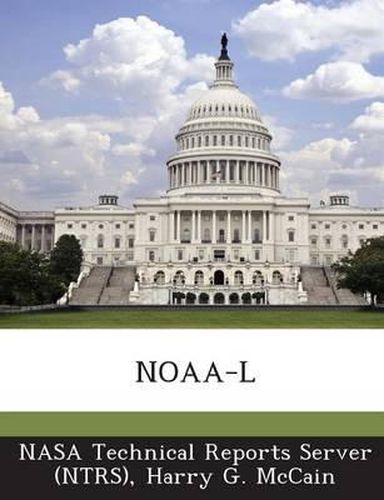Readings Newsletter
Become a Readings Member to make your shopping experience even easier.
Sign in or sign up for free!
You’re not far away from qualifying for FREE standard shipping within Australia
You’ve qualified for FREE standard shipping within Australia
The cart is loading…






The National Oceanic and Atmospheric Administration (NOAA) and the National Aeronautics and Space Administration (NASA) have jointly developed a valuable series of polar-orbiting Earth environmental observation satellites since 1978. These satellites provide global data to NOAA’s short- and long-range weather forecasting systems. The system consists of two polar-orbiting satellites known as the Advanced Television Infrared Observation Satellites (TIROS-N) (ATN). Operating as a pair, these satellites ensure that environmental data, for any region of the Earth, is no more than six hours old. These polar-orbiting satellites have not only provided cost-effective data for very immediate and real needs but also for extensive climate and research programs. The weather data (including images seen on television news programs) has afforded both convenience and safety to viewers throughout the world. The satellites also support the SARSAT (Search and Rescue Satellite Aided Tracking) part of the COSPAS-SARSAT constellation. Russia provides the COSPAS (Russian for Space Systems for the Search of Vessels in Distress) satellites. The international COSPAS-SARSAT system provides for the detection and location of emergency beacons for ships, aircraft, and people in distress and has contributed to the saving of more than 10,000 lives since its inception in 1982.
$9.00 standard shipping within Australia
FREE standard shipping within Australia for orders over $100.00
Express & International shipping calculated at checkout
The National Oceanic and Atmospheric Administration (NOAA) and the National Aeronautics and Space Administration (NASA) have jointly developed a valuable series of polar-orbiting Earth environmental observation satellites since 1978. These satellites provide global data to NOAA’s short- and long-range weather forecasting systems. The system consists of two polar-orbiting satellites known as the Advanced Television Infrared Observation Satellites (TIROS-N) (ATN). Operating as a pair, these satellites ensure that environmental data, for any region of the Earth, is no more than six hours old. These polar-orbiting satellites have not only provided cost-effective data for very immediate and real needs but also for extensive climate and research programs. The weather data (including images seen on television news programs) has afforded both convenience and safety to viewers throughout the world. The satellites also support the SARSAT (Search and Rescue Satellite Aided Tracking) part of the COSPAS-SARSAT constellation. Russia provides the COSPAS (Russian for Space Systems for the Search of Vessels in Distress) satellites. The international COSPAS-SARSAT system provides for the detection and location of emergency beacons for ships, aircraft, and people in distress and has contributed to the saving of more than 10,000 lives since its inception in 1982.